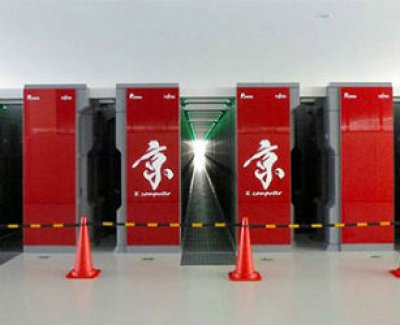Supercomputer takes 40 mins to calculate a single second of human brain activity
The brain is a deviously complex biological computing device that even the fastest supercomputers in the world fail to emulate. Researchers at the Okinawa Institute of Technology Graduate University in Japan and Forschungszentrum Jülich in Germany have managed to simulate a single second of human brain activity in a very, very powerful computer.
 This feat of computational might was made possible by the open source simulation software known as NEST. Of course, some serious computing power was needed as well. Luckily, the team had access to the fourth fastest supercomputer in the world — the K computer at the Riken research institute in Kobe, Japan.
This feat of computational might was made possible by the open source simulation software known as NEST. Of course, some serious computing power was needed as well. Luckily, the team had access to the fourth fastest supercomputer in the world — the K computer at the Riken research institute in Kobe, Japan.
Using the NEST software framework, the team succeeded in creating an artificial neural network of 1.73 billion nerve cells connected by 10.4 trillion synapses. While impressive, this is only a fraction of the neurons every human brain contains. Scientists believe we all carry 80-100 billion nerve cells, or about as many stars as there are in the Milky Way.
Knowing this, it shouldn’t come as a surprise that the researchers were not able to simulate the brain’s activity in real time. It took 40 minutes with the combined muscle of 82,944 processors in K computer to get just 1 second of biological brain processing time. While running, the simulation ate up about 1PB of system memory as each synapse was modeled individually.
This project was intended to prove our capacity to model biological systems has reached a critical juncture. Science can finally describe a sufficiently complicated system to model the brain.
Sure, this takes unbelievable mountains of computing resources now, but that’s been the case with every problem computer science has tackled since the days of vacuum tubes. At first, only the fastest computers on Earth could play chess or render 3D graphics, but not anymore.
Perhaps all we need for artificial intelligence is a simulation of the brain at least as complex as ours. That raises the question, if you build a brain, does it have a mind? For that matter, what happens if you make a simulated brain MORE complex than the human brain.